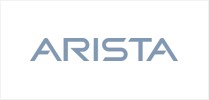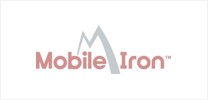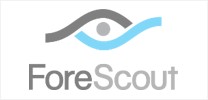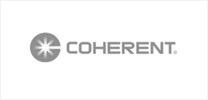When economic uncertainty strikes, turn to your metrics and KPIs. They offer an objective touchpoint during times when everything else is up in the air.
This post is all about why metrics matter during a market correction. We’ll explain why metrics are so essential for SaaS financial health (in all markets but particularly in poor ones), and then cover 5 of the most important KPIs to watch during a dip.
How do metrics help when certainty drops?
Since SaaS CFOs are human beings just like the rest of us, their decisions are colored by emotions.
This means that unless you’re either very careful or very disciplined, it’s incredibly easy to make impulsive and fear-based decisions in a downturn.
And since it’s easier to be unclear than to remain disciplined in scary situations, putting up “guardrails” in the form of SaaS metrics is invaluable.
That way, any time you have a thought or a plan you suspect might be influenced by fear of external conditions, you can check it against your metrics.
Optimal financial leadership during a recession means being proactive rather than reactive–and that starts with your metrics. Below are 5 of the most crucial metrics to watch in times of uncertainty.
1: CAC to CLTV ratio
Your customer acquisition cost (CAC) and customer lifetime value (CLTV) are two extremely important KPIs.
Your CAC tells you how much you’re spending on average to acquire each customer, and your CLTV tells you how much money your users are spending with you before they churn.
During an economic dip, you need to keep a very close eye on your CAC to CLTV ratio. Do everything you can to reduce your CAC and get your CLTV as high as possible.
Some techniques for doing that include:
- Experimenting with different billing and pricing methods.
- Carefully observing usage trends to identify what’s working and what’s not.
- Reducing subscription upkeep costs by embracing financial process automation.
What other metrics should be on your radar in uncertain times?
2: Monthly recurring revenue
Monthly recurring revenue (MRR) is one of your most essential revenue metrics during a downturn. It measures the amount of committed monthly revenue you’re generating from existing subscriptions.
Drumming up new customers is essential too, but capital preservation and customer retention are more profitable for most companies in a recession (or pre-recession market).
Cloud-based financial software makes tracking and improving your MRR simple and seamless.
3: Churn
Churn simply cannot be tolerated when the markets are poor. SaaS accounting automation can help you proactively manage both types of churn.
Voluntary churn: Early intervention is the key to preventing voluntary churn. AI enables finance teams to carefully track and forecast churn rates to easily identify users who are likely to churn soon. Once you’ve identified them, you can send that data over to sales for customer success outreach.
Involuntary churn: Involuntary churn occurs when users need to update their payment data and their card gets declined. Once a user’s card declines, cloud-native accounting software can send out automatic emails asking that person to update their payment info.
Staying on top of both types of churn is an absolute necessity in subpar markets.
4: Trial health
Trial health measures the percentage of users who converted to a full subscription after signing up for a free trial.
It’s usually expressed as a percentage and can be found by dividing the total number of trial conversions for a given period by the total number of trial signups for that same period.
So, for instance, if you achieved 3,300 conversions across 3,500 free trials in the previous quarter, your trial health for that period would be 94%.
Free trials are a great way to create more business in times of uncertainty, but only if they’re measured and managed proactively.
5: Cash burn rate
Your cash burn rate (CBR) tells you how long your cash reserve will last given your revenue and liabilities.
It’s broken down into three pieces:
- Gross burn rate: Your gross burn rate measures your company’s expenses. Just total up your average monthly liabilities, and you’ve got your gross burn.
- Net burn rate: To find your net burn rate, subtract your monthly expenses from your monthly revenue.
- Cash runway: To calculate your cash runway, divide your current bank holdings by your net burn rate. Your cash runway is usually expressed in months.
The three parts of your cash burn rate work together to provide a clear picture of your cash coming in and going out. More importantly, it offers a precise gauge of how much financial leeway you have in light of those two realities.
Making the most of your metrics
In order to develop a truly profitable relationship with your metrics during a downturn, it helps to follow a few best practices.
Make sure everyone understands why KPIs matter
If everyone in your department is fully aware of the strategic importance of KPIs, it will be much easier to keep things from slipping through the cracks.
Optimize your SaaS finance tech stack
Opting for modern accounting software gives teams much more freedom to interact with their metrics.
Embrace financial process automation
Manual reporting and forecasting around SaaS metrics are ineffective and potentially costly.
You can’t control the state of the markets. But as a SaaS CFO, you can certainly control how your department responds to those conditions.
Thrive in any market by investing in yourself
When it comes to achieving SaaS accounting success and long-term profitability, very few things matter more than your metrics. When market conditions are poor, fear tends to creep in and become a larger influence in decision-making. Your SaaS metrics provide an objective reference point to keep that from happening, allowing you to operate confidently at all times.
To learn more about how you can lead with confidence and clarity in and out of recessions, join the Modern SaaS Finance Academy. It’s an online academy designed by SaaS finance and accounting leaders at the forefront of the industry. Each course was created to help you gain the skills and perspectives you need to guarantee success in the coming years–topics include forecasting for fundraising, frameworks for reporting to your board, innovative AR designs, and much more.
Join today and level up your SaaS finance career.













